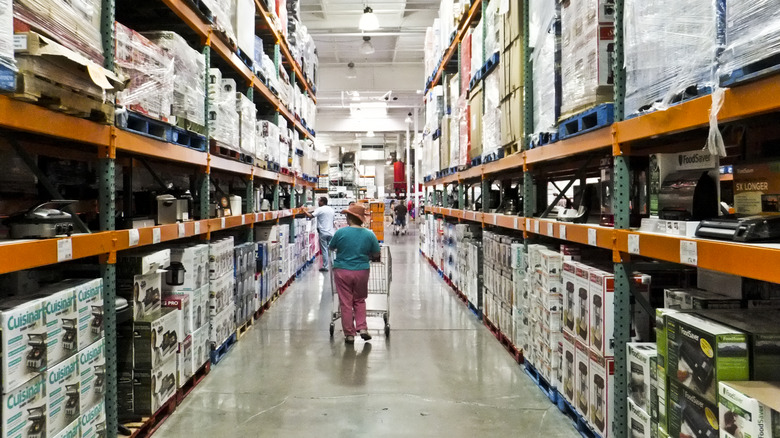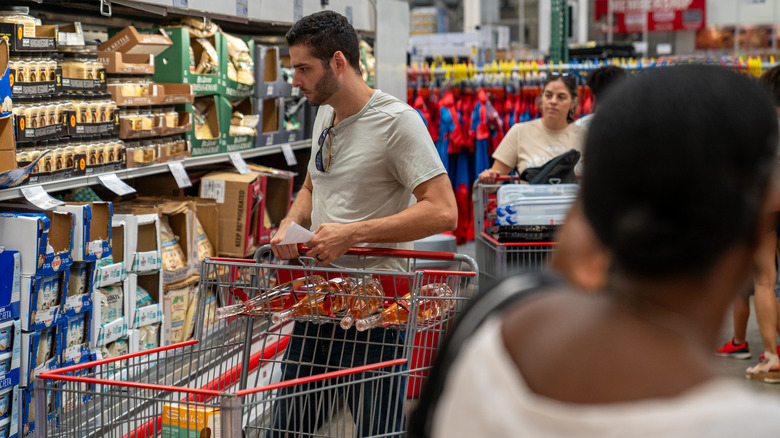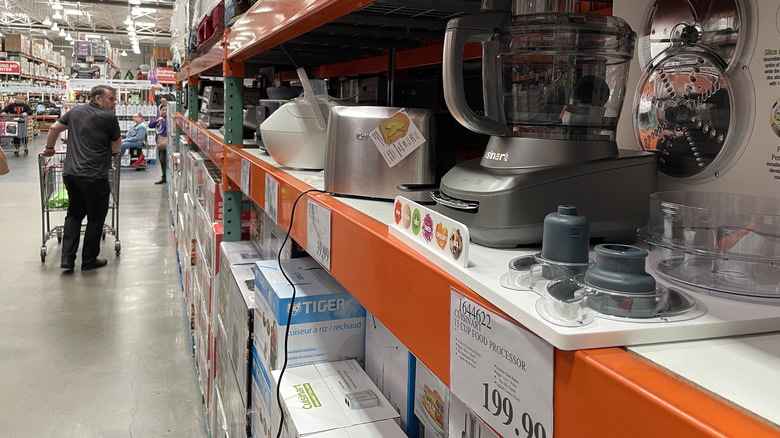The Clever Reason Costco Doesn't Label Its Aisles
When most of us take that blessed trip to Costco to stock up on groceries, we often go in expecting samples, large carts, and a line for the exclusive in-store pizza slices at the beloved Costco food court. What we don't expect are the mind games the people in charge of the place are playing.
That's right, Costco's overall layout is one big mind trick set up by its leadership. Unlike most grocery stores, Costco does not label its aisles, and that's on purpose. Robert Price, an original founder of PriceSmart, which merged with Costco in 1993, explained to NPR that he was "adamant that we would not have signs telling people where things were" to encourage customers to wander.
As a shopper, we might see vast aisles filled to the brim with bulk buys, but what Costco's leadership sees is an opportunity to extend your shopping experience and your receipt length. Find out why Costco aisles are designed this way.
Why Costco stores look like this
The thinking behind Costco's lack of aisle labels is simple, yet genius. Just think about it. When you're missing one ingredient, you stop in at the grocery store and go directly to the aisle where it is stocked on the shelf.
At Costco, you have to go up and down through the aisles to find items, leaving more opportunity for you to place some in-the-moment splurges into your cart. In addition to not labeling the aisles, Costco also intentionally only stocks a limited number of brands of certain items.
For example, Costco stocks small, medium, and large Ziploc bags, limiting its selection. Price notes that this is done because more selection leads to higher labor costs for employees to continuously restock shelves to make everything look presentable. In contrast, Costco products are stocked in pallets and moved by forklifts instead of individual hands. The brand doubles down on its limited selection approach also by mostly carrying its own private label — Kirkland.
What Costco does to make you spend
In addition to keeping aisles anonymous and maintaining a limited selection of products, Costco has many other clever ways to get its customers spending. Much like wandering through unlabeled aisles, the company often rearranges where products are kept. This also leads to customers browsing through all the aisles to find what they need.
When a product isn't selling well, Costco will remove it from the shelves in the hopes people will notice and beg for it to come back. Once the company does restock the item, the price is lowered. This works by creating a scarcity mindset, which leads people to feel like they need to stock up on the item before it goes away again.
And have you ever wondered why all the big screen TVs are kept near the front entrance of the store? It's not just about drawing your eye to a big ticket item. It's about making you feel like you'll miss out on a great deal if you don't grab it before walking further into the store. This is once again a psychological play to get you to spend more money.


